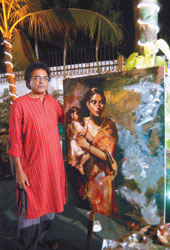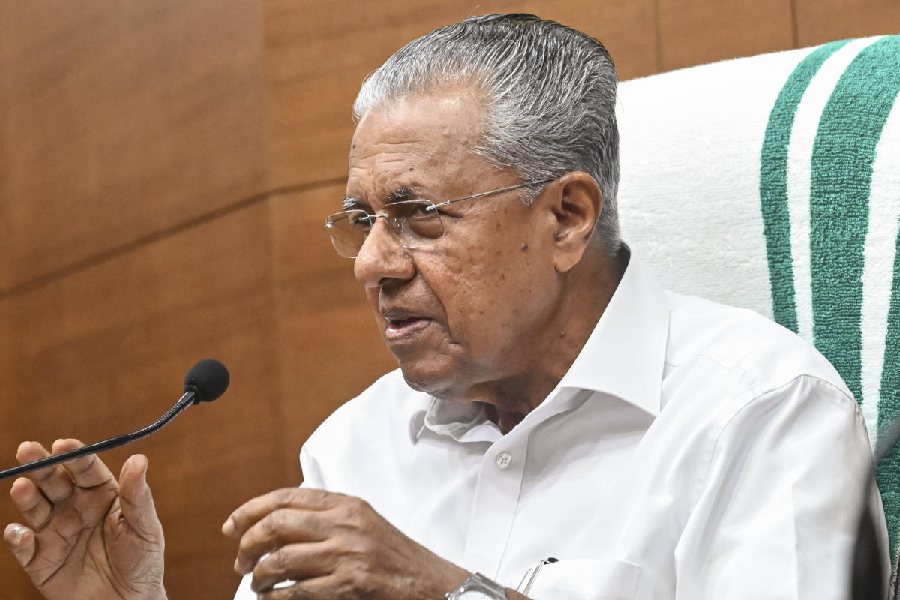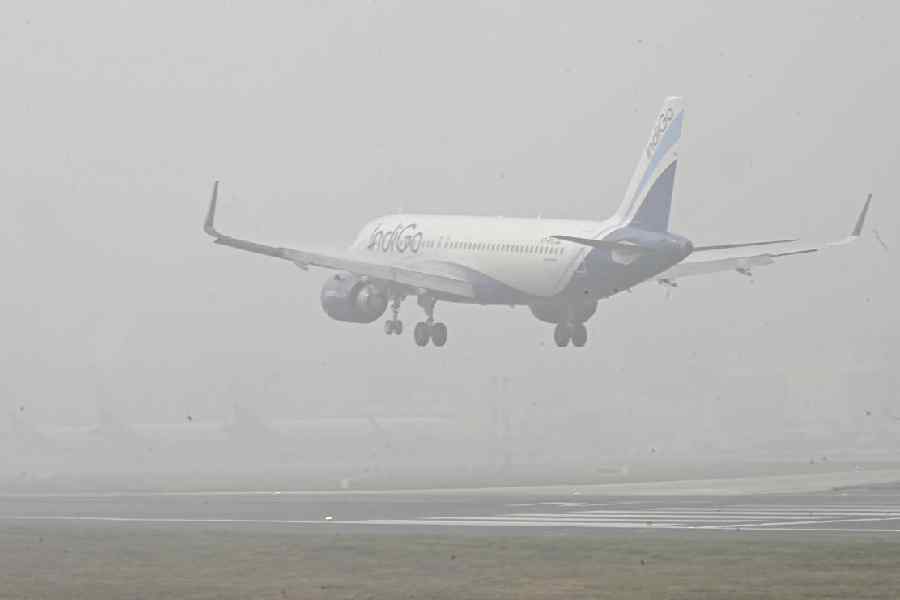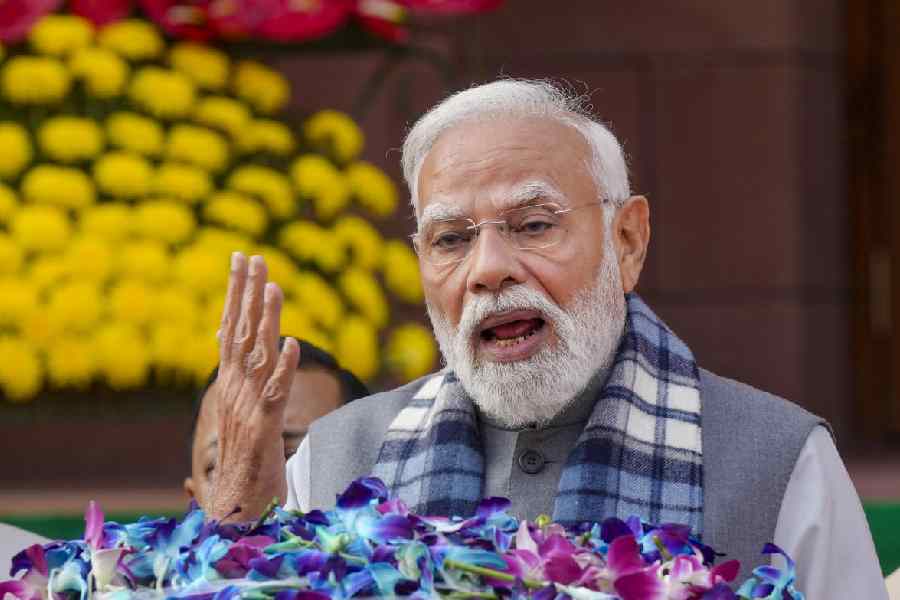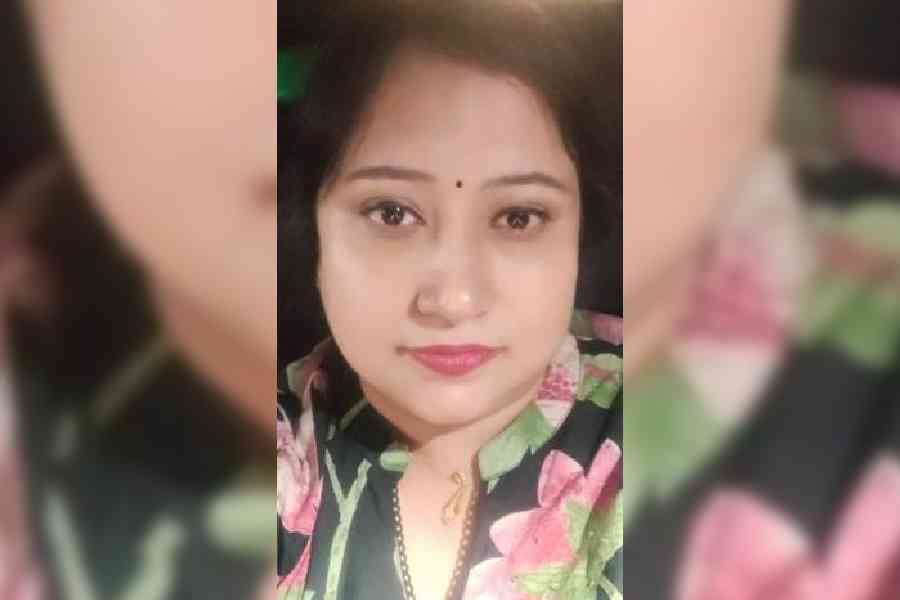 |
Subrato Gangopadhyay has been run off his feet for the last few weeks. First, he was wielding his brush by the Taj Bengal poolside, in a bid to raise money for the tsunami victims in an event organised by the Rotary Club. Then he was off for an art camp in Maihar, Madhya Pradesh.
At the Taj, Gangopadhyay was the centre of attraction as he painted an image of a mother and child. A few hours later, the painting was snapped up by Neeru Poddar, the wife of a Rotaract, for Rs 85,000. ?I will go to her place later and give the final touches. As the lights are not bright enough, I cannot see the depth of the colours,? said Gangopadhyay.
Then it was on to the art camp organised by a museum in Madhya Pradesh. The small-town museum preserves artefacts on sarod maestro Allauddin Khan and organises art camps every year in collaboration with Calcutta?s Sanskriti Art Gallery. ?I?d once done the maestro?s portrait which used to be kept in a New Delhi gallery. But the Maihar museum acquired a print of that to display in its collection,? says Gangopadhyay.
It has been a long journey as an artist for Gangopadhyay since the time when he sold his first work in 1980 at a Bangladesh High Commission show in Dhaka. He is also a founder member of Painters 80, which used to exhibit works of upcoming artists at the Lalit Kala Academy. But his first solo exhibition was held at the Birla Academy in 1990. He claims that was his most enjoyable exhibition. ?I had a lot of fun organising it because it was not at a gallery, where you have to leave everything to the gallery people. Here, I was actively involved in every aspect of the exhibition.?
By 1997, Gangopadhyay left his job as an assistant art director at a Calcutta publishing house to put together a series on musical and dance maestros of the Indian classical genre. ?That?s when I had done Khansaab?s portrait, along with Pandit Ravi Shankar, Amjad Ali Khan and the like. I had also done a series on music concerts and folk dances like the dandia and the desert dances of Rajasthan,? he says. This collection was exhibited at the Ganesh Art Gallery in New Delhi in 2000.
Subsequently, Gangopadhyay?s works have travelled to international destinations such as the US, Germany, France and Japan. His work can also be found in the collections of RPG Enterprises, the Taj Group, the Chennai Museum, Mayo College, and the Victoria Memorial, to name a few. In 2002, his works were showcased at the Tokyo Art Gallery, followed by a solo exhibition the following year at Hyderabad. Last year, there was another at a New York gallery. And 11 of his paintings on the Bengal Renaissance and landscapes of old Calcutta, are displayed at the 300 Room in the Bengal Club.
Belonging to the naturalistic school of painters, he uses ?vivid colours to portray abstract feelings in the natural forms?. Gangopadhyay feels that modern art or even installation art gives the artist total independence and so it is either done too well or tends to be misused. ?The idea of installation is very Western and it will take some time to become popular in our culture. Life is painful anyway. But artists often come up with morbid and uncanny forms that are not desirable,? he opines. However, he admits to being a fan of Chitravanu Mazumdar and Partha Pratim Deb?s work.
He?s critical of the modern curriculum at art schools and feels they are neglecting the past. ?They don?t teach you to look back, but start from here and now. But you cannot ignore nature or your background. Formal training is very important,? he says adding, ?To distort or break an idea, which is often done in installation art, you need to know how the idea is formed in the first place. You need knowledge to build a house and then decorate it. And this knowledge comes from experience.?
Gangopadhyay lives in Calcutta with his wife and two sons. He comes from a family of painters. ?My father couldn?t pursue this profession for financial reasons, but my mother made sure we followed our heart. My elder brother is now the head of the department of commercial art at the Art College,? he adds.
He?s also critical of Western art. ?Oriental art is reviving values that attract people the world over. Compared to us, the Western lifestyle is very disturbed and lacks depth.?
Gangopadhyay finds subjects for his work from what he sees around himself every day. As a child, he would always carry a chalk or a pencil in his pocket and sketch whatever he saw, wherever he could. He remembers sketching a Parsi gentleman who used to give him lozenges. The weddings in the family, the pond near his grandmother?s house, all created images in his mind which in later life, found expression through his paintings.
Gangopadhyay derives inspiration from teacher and guide Bikash Bhattacharjee. ?He has always encouraged me. He would ask me to learn from my work as an illustrator. I am indebted to his advice,? he says, adding, ?Anybody who hates me or loves me, inspires me to paint. Whenever I would be depressed, my mother would ask me to work it out and I would start painting. I think that?s the best healer.?
Writer Sunil Gangopadhyay has been another great influence. ?He?d asked me to get a table and a chair to just sit down and think. He?d say that was the only way I could shift my mind from being an illustrator to a painter,? says Gangopadhyay who describes his art as ?semi-abstract naturalistic, verging on surrealism?.
For him, ?every day is a new birth? just as his work is reborn every day. ?Every day I learn or get something new. It is a new struggle every day,? he says.
Photograph by Rashbehari Das

